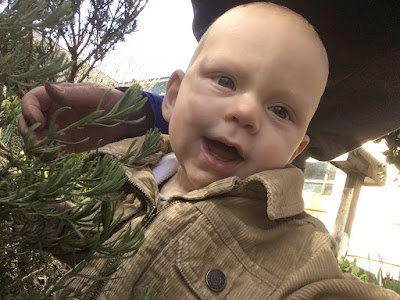My theme for Lent this year is the Land I Live On. Most of my activism focus is on climate change, and I want to fuel that work with a strong and intimate connection to this land. I want to better understand my relationship to the natural world and the cycles of the seasons, the history, culture, and ecosystem of my valley, the indigenous peoples and how I connect to them, and the responsibility I feel for the land.
Also, because I am caring for my grandson this year, I have a unique opportunity to see the natural world through a baby's eyes, with Wonder and Discovery. I want to re-connect to the awe for Creation that I felt as a child.
February 28, Second Sunday of Lent-
1. Journal queries: What have I learned so far from my Lenten fast and study? What are the next steps to take? Ground myself in optimistic hope for the future, and open to the best actions to take.
From my journal: I've really been enjoying my study of the Kalapuyans, and my reading from Braiding Sweetgrass. One point I keep hearing is that Nature is not an it, but a living being. Something that Leah Penniman said in the talk last week on Ecological Civilization struck me. She said we need to find ways to talk to the natural world, to ask before taking from or changing the land, and we need to look to our own ethnic culture for the ways to do that, rather than appropriating another's.
What does MY culture have to say about talking to nature?
March 1 -
2. Order some bee-friendly plants: Oregon's Native Bees Are In Steep Decline! Native bees, such as bumblebees and solitary bees that provide essential pollination for agricultural crops and native plants, are in trouble. Many species are at risk of extinction. As pollinator populations decline, the lower production of healthy fruits and vegetables is placing the entire natural system in peril. What can I do?
1. Do not apply neonics to my yard.2. Grow bee-friendly flowers: I've already got lots of mint, yarrow, salmonberry, California poppy, asters, clover, milkweed, and fireweed, and I'm going to start some lupine seeds I have this week. And I'm going to order a native snowberry plant to grow under my apple tree!
March 2 -
3. Wonder Practices - talk to my raspberries: In an attempt to outline a process for talking to nature that connects to my own racial roots (White) I've been looking at Nature Paganism and at the Findhorn community. Findhorn calls it partnering with the consciousness of nature, or co-creation.
Today I'm going to try this out with my raspberries:
1. See them as a beings rather than objects. Greet them as the old friends they are, and apologize for ignoring them lately. Tell them how grateful I am for their dependability and generosity every year.
2. Catch up with them: Ask them what's new in their lives, how the winter has treated them. Soak up their presence and listen for the poetry of the raspberry.
3. Offer them the gift of looser soil, fresh compost and a sprinkle of organic food. And time; just spend some quiet time with them.
March 3, Hina Matsuri-
4. Hina-okuri ceremony: This is a Japanese Shinto purification custom. I will decide what ills of mine I would like to not carry any further - issues and habits I wish I didn’t have - then I will choose a few that I’m ready to be free of now. I'll write each on a paper Hina doll.
5. Wonder Practices: I'll finish the Hina-okuri ceremony on my morning walk with my Grandson. We will visit the Amazon creek and watch the dolls float downstream (and say hi to the ducks!)
March 4-
6. Study Braiding Sweetgrass, section 3: The reciprocity theme continues in this section with an emphasis upon the gifts the land provides, finding our unique gifts to give in return, how our gifts can be used to foster the sense of community, and how “plants teach in a universal language: food.”
In The Three Sisters story I learned that “... the lessons of reciprocity are written clearly in a Three Sisters garden. Together their stems inscribe what looks to me like a blueprint for the world, a map of balance and harmony.” When corn, beans, and squash are planted together, their “organic symmetry of forms belongs together... Respect one another, support one another, bring your gift to the world and receive the gifts of others, and there will be enough for all.” What does each of The Three Sisters bring to their reciprocal relationship? How can this partnership create a stronger community? Can I think of other examples of such win-win situations?
March 5, World Day of Prayer-
7. Prayer for Courage:
Give us grace, O God, to dare to do the deed which we well know cries to be done.
Let us not hesitate because of ease, or the words of men’s mouths, or our own lives.
Mighty causes are calling us—the freeing of women, the training of children, the putting down of hate and murder and poverty—all these and more.
But they call with voices that mean work and sacrifice and death.
Mercifully grant us, O God, the spirit of Esther, that we say: I will go unto the King and if I perish, I perish.
Amen.
~W. E. B. Du Bois
8. Wonder Practices - Play in the rain: Aldo has new rain shoes and we are going puddle hopping!
March 6-
9. Draw a Lino block: I'm working on a series of block-printed prayer flags to hang in public spaces, and today I'm starting one for Wonder. One of the things I like most about the Craftivism movement is that, as I work, I'm not only expressing my hope for change, but also creating a quiet space for myself to regain a sense of power and purpose.























